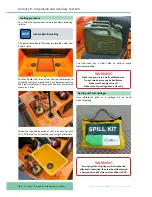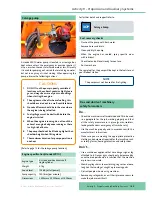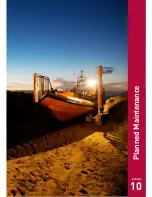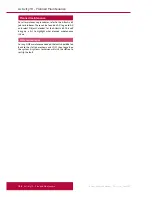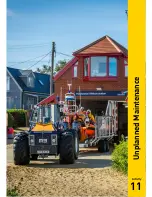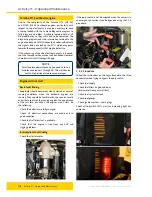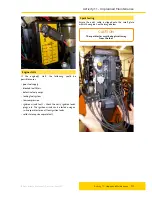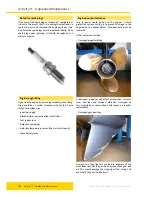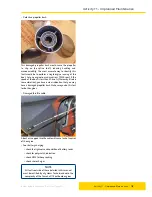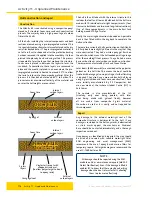
Activity 9 - Propulsion and Auxiliary Systems
99
B Class Atlantic 85 Manual – First Issue, June 2017
Activity 9 - Propulsion and Auxiliary Systems
Bleeding the hydraulic steering system
CAUTION
Hydraulic fluid can be an irritant. Prolonged and
frequent contact may cause redness and irritation.
• Avoid contact with eyes.
• Avoid frequent prolonged skin contact.
• Wash hands thoroughly after contact.
• Use disposable cloths and discard when soiled.
• Store under cover away from heat and sources
of ignition.
If a part of the hydraulic steering system is removed for
re-sealing or replacement, air will enter the system which
means it will require bleeding. In order to carry out the
bleeding procedure you will require a hose and funnel
assembly, which is an RNLI recommended spare, and the
appropriate type of fresh hydraulic fluid.
NOTE
The Divisional Base must be informed when the
hydraulic steering system requires bleeding.
When bleeding the system, keep the hose full of
hydraulic fluid at all times.
• Remove the helm and reservoir unit filler-cap. Screw
the threaded end of the hose and funnel assembly into
the filler hole and top up with fresh hydraulic fluid. Wait
until the air bubbles have finished coming out of the
helm unit.
Bleeder valve
High pressure
Low pressure
Bleeder valve
• Turn the wheel clockwise until the cylinder
rod is fully extended out of the port side of the
steering cylinder.
• Place a container beneath the starboard bleed nipple to
catch the fluid, then open the bleed nipple.
• Turn the wheel anti-clockwise until a steady stream of
air-free fluid is coming out of the bleed nipple.
• Close the bleed nipple and continue to turn the wheel
anti-clockwise until the cylinder rod is fully extended on
the starboard side of the cylinder.
• Place a container beneath the port bleed nipple to catch
the fluid, then open the bleed nipple.
• Turn the wheel clockwise until a steady stream of air-
free fluid is coming out of the bleed nipple.
• When a steady air-free stream of fluid is seen on this
side, close the bleed nipple.
• It may be necessary to repeat this process a few times
before the system is fully clear of air bubbles.
• Finally remove the hose and funnel assembly from
the helm and resevoir unit and replace the filler cap.
Carefully clean up any spillage.
If the steering system needs bleeding, Refer to job card
0801-6M-001 (Staff level 2).
Summary of Contents for Atlantic 85
Page 1: ...B CLASS ATLANTIC 85 MANUAL...
Page 2: ......
Page 4: ......
Page 8: ......
Page 11: ...Activity 2 Personal Competencies Personal Competencies Activity 2...
Page 31: ...Activity 3 Launch and Recovery Launch and Recovery Activity 3...
Page 37: ...Activity 4 SAR Unit Handling and Seamanship SAR Unit Handling and Seamanship Activity 4...
Page 51: ...Activity 5 Search and Rescue Search and Rescue Activity 5...
Page 57: ...Activity 6 Communications Communications Activity 6...
Page 67: ...Activity 7 Navigation Navigation Activity 7...
Page 70: ......
Page 71: ...Activity 9 Propulsion and Auxiliary Systems Propulsion and Auxiliary Systems Activity 9...
Page 106: ......




















